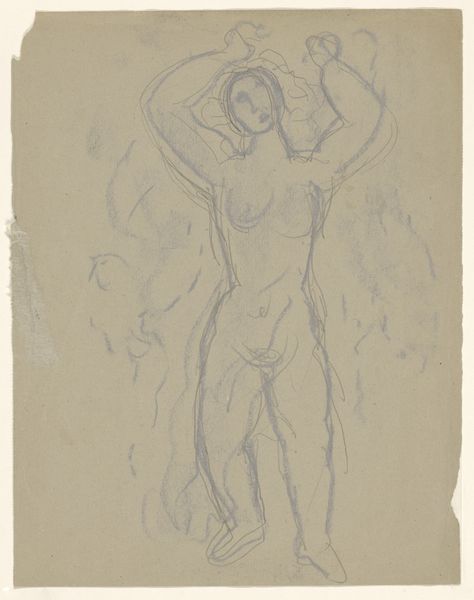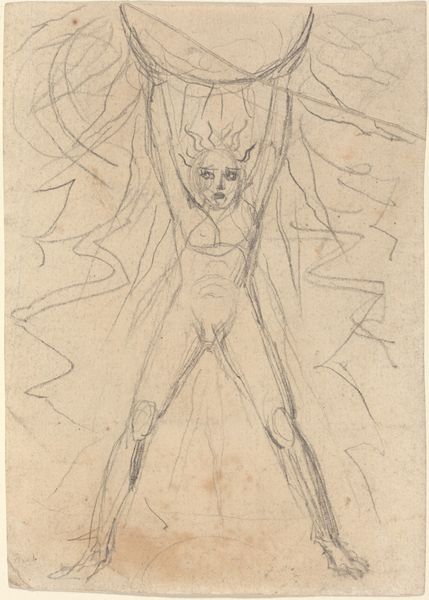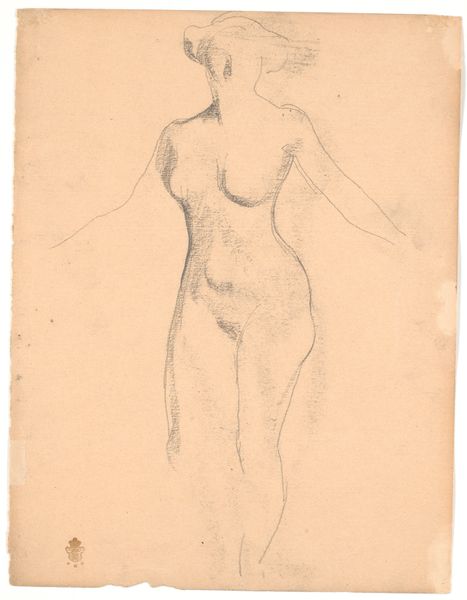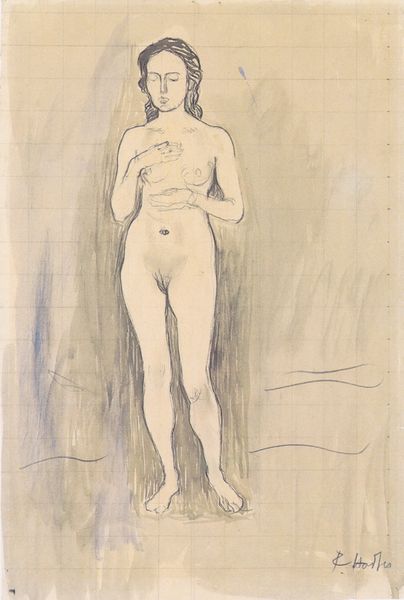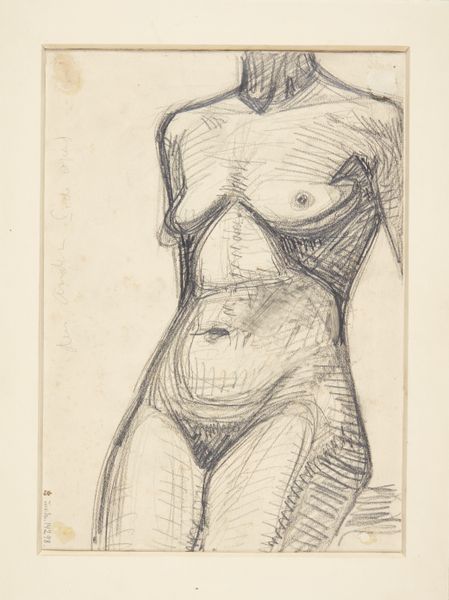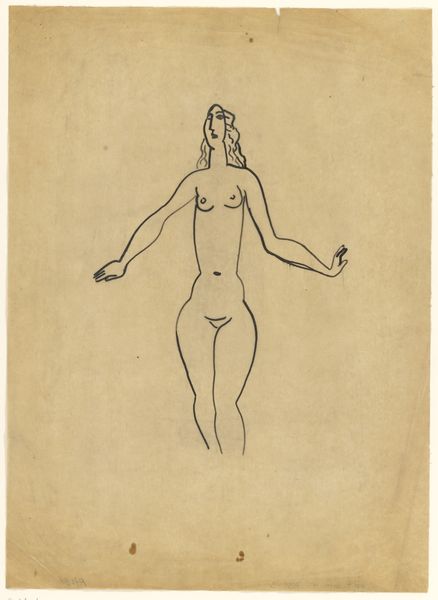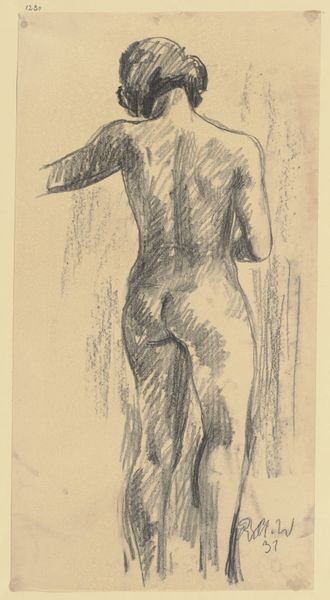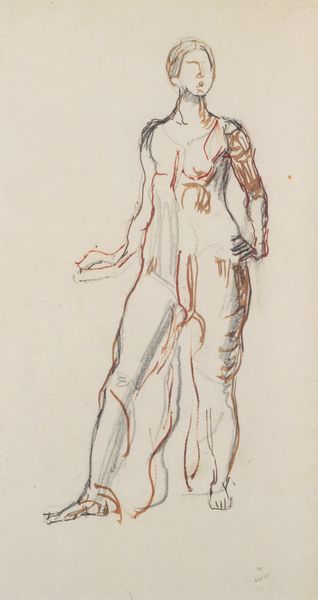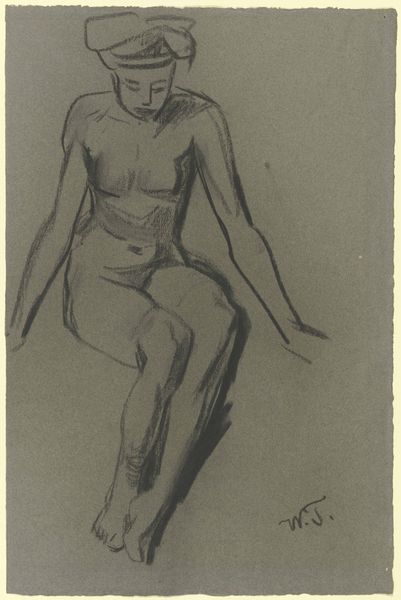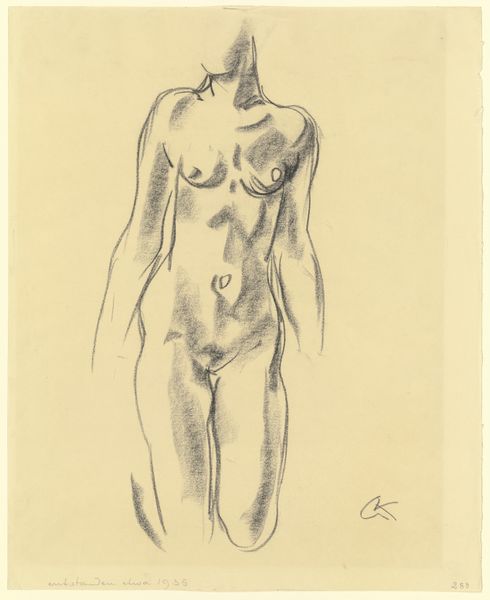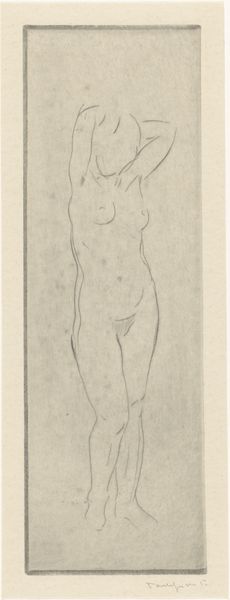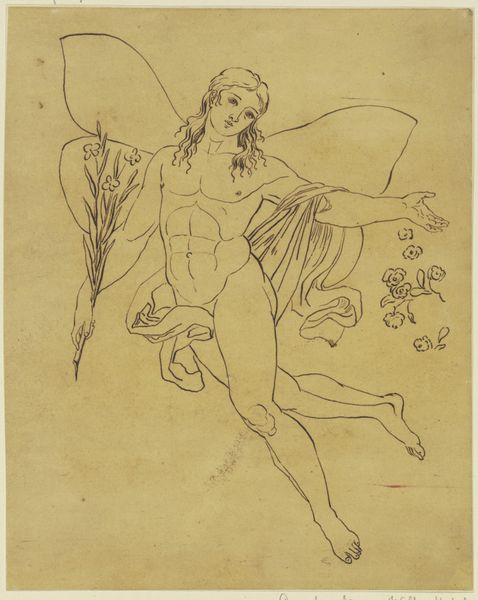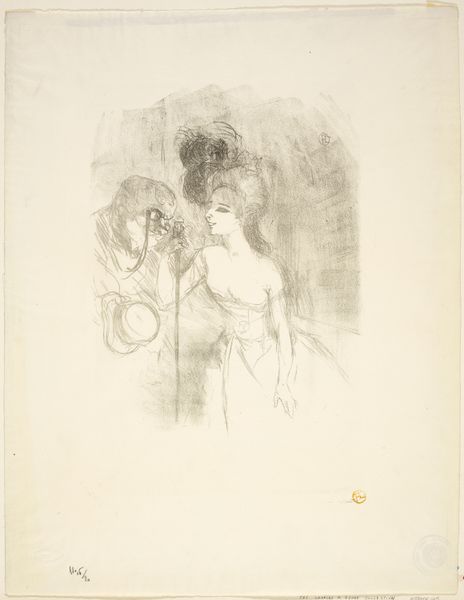
Abundance, from the ninth album of L'Estampe originale 1895
0:00
0:00
drawing, lithograph, print, paper
#
drawing
#
lithograph
# print
#
figuration
#
paper
#
symbolism
#
nude
Dimensions: 152 × 310 mm (image); 394 × 235 mm (sheet)
Copyright: Public Domain
Curator: At first glance, the image presents a melancholic stillness, even a certain ethereal fragility, stemming from the artist's use of line. Editor: Indeed. What we're viewing is Pierre Puvis de Chavannes' lithograph from 1895, "Abundance," which was included in the ninth album of L'Estampe originale, now held at the Art Institute of Chicago. Let's unpack the social context. L'Estampe originale was this late 19th-century printmaking initiative aiming to elevate the status of prints as fine art. Curator: The symbolism employed here by Chavannes is deeply resonant with this intention. There is an inherent connection to ideas of offering and generative capability. Water, the source of life, emanates freely. This evokes images of mother goddesses and concepts tied to earth's provisions. Editor: That’s insightful. The almost ghostly rendering of the female figure is key to the late nineteenth century symbolist art movement. It really played up these themes of longing, the spiritual, and an overall dissatisfaction with materialistic modernity. There was this almost Neo-Platonic approach towards beauty. This "abundance" almost becomes idealized, something not necessarily attainable in everyday experience. Curator: The nude figure is so prevalent throughout time and in culture. This representation has strong associations with purity, authenticity, and unmediated understanding. But look at the slight slump of her shoulders and downcast glance: this abundance almost burdens her. Editor: It's compelling to view the historical role museums have played. In exhibiting works like this, spaces served not just as display repositories, but sites for shaping how the public thinks about concepts such as the “ideal woman” during rapid social changes, whether it reflected or contested those prevailing views. Curator: That consideration of its original public reception is so crucial; thank you. To consider it, it encourages one to also explore the enduring themes it captures about idealized beauty and existential questions. Editor: Precisely, an abundance of food for thought, then.
Comments
No comments
Be the first to comment and join the conversation on the ultimate creative platform.
